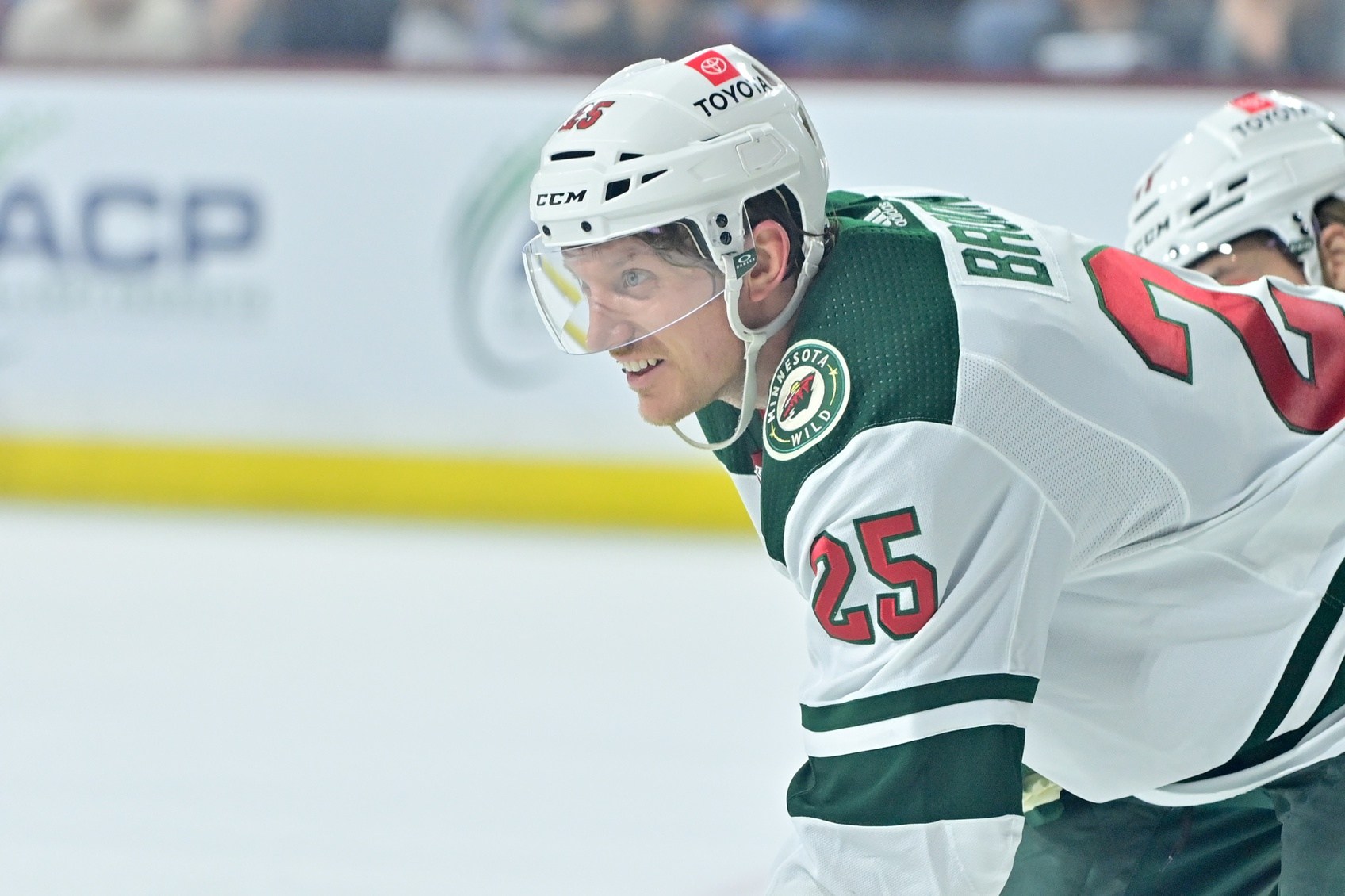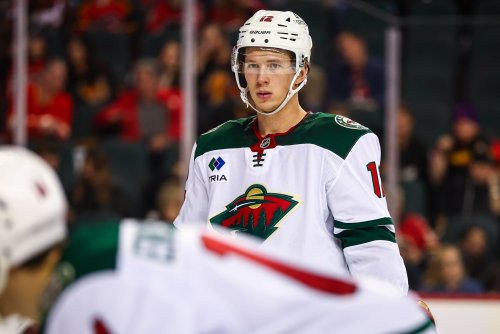
The hits just keep on coming this season in Minnesota. Jonas Brodin’s absence was the latest in a string of untimely injuries and big-game failures, underscoring a brutal 6-0 loss in Los Angeles. Taken together, they feel like the death blow to the season.
But more importantly, Brodin’s injury could be a major problem for the roster going forward.
If Brodin suffers the usual effects of an injury to an older player, it could be backbreaking to an already strained roster -- especially on defense. The team has slowly lost defensemen over Bill Guerin’s tenure, including Ryan Suter to a buyout and Matt Dumba to free agency. Brock Faber’s arrival helps to offset those losses, but it does little to offset the aging and now-injured Brodin and Jared Spurgeon.
Spurgeon is recovering from hip and back surgery. He turns 35 in November. Brodin will be 31 to start next season. Both defensemen have quietly dealt with injuries over the past few seasons. Brodin played only 60 games last season and 73 the year before, while Spurgeon played only 65 games in 2021-22.
It's not certain that these players' injuries will cause future absences. Some injuries reappear more often than others, but it’s tough to measure that in the NHL, where injury reporting is extremely vague. So, in some sense, there’s limited evidence that future injuries will hamper Brodin and Spurgeon.
What is concerning is that injuries typically signal the beginning of age-related decline.
One of the perks of Spurgeon and Brodin anchoring this defense corps into their 30s is that they are defensive defensemen. Dom Luczyszyn’s model at The Athletic awards each player an offensive and defensive rating, which makes up an analytical estimate of their overall value. Per their player cards below, their defensive abilities provide the lion’s share of their value.


That makes them a solid bet to age gracefully, specifically because they rely on their defensive strengths. Analysis from HockeyViz.com indicates that it’s easier to avoid aging on the defensive side of the puck, regardless of position.

So, betting on Spurgeon and Brodin to live up to their contracts wasn’t a terrible idea. While it’s true that the defensive roster has been thin on the bottom pair, a brigade of defensive prospects was set to take their lumps in Iowa and start pushing to make the NHL roster by 2024-25.
These injuries put that plan at risk. Limited NHL research on the subject exists because vague injury reporting prevents the public from measuring different types of injury. Still, it’s generally true that it predicts age-related decline once an older player suffers an injury.
Jeff Zimmerman described the relationship between injury and aging in baseball at FanGraphs.
After age 25…players who were hurt [last season], but then healthy [this season], recover just enough to deny aging, but not enough health to overtake the downward trend. The data shows that once the average player is hurt, they aren’t able to go back up to their old aging curve. Instead they have a new talent baseline which will start aging.
Players who get hurt don’t resume their normal aging if they return healthy next season. Instead, it’s like accelerating the aging process.
It’s difficult to say exactly how the relationship between age and injury works. In some cases, the injury diminishes a player’s athletic ability -- they just never get back to 100% due to nagging pain or weakened muscles and ligaments. In other cases, players simply can’t be as physical or risk re-injury, forcing them to change their game.
Whatever the cause, the Wild front office needs to adjust its expectations for Spurgeon and Brodin going forward. Even if they return to full health, Spurgeon is signed through 2026-27 and Brodin through 2027-28. Those years, and the ones in between, are nearly sure to see both players steadily decline from their top-pairing value.
Even worse, Minnesota doesn’t have much room for growth on the blue line. Assuming they tender Declan Chisholm, they will have seven NHL defensemen under contract next year. Chisholm is already 24 years old, so the team shouldn’t rely on him for a sudden breakout. That leaves Jake Middleton and Zach Bogosian competing to fill out the top four defensemen, with little room to try out a prospect.
Let’s talk about those prospects. The Wild front office got a good look at Daemon Hunt, Carson Lambos, and Ryan O’Rourke in camp. By the end of camp, the front office pulled the trigger on three early extensions for Ryan Hartman, Marcus Foligno, and Mats Zuccarello.
Those extensions signaled that the team wanted to use this roster to compete now and in the future, with limited changes to its forward group. Logically, that leaves less money to bolster the defense via free agency.
Fast-forward to the end of this year, and the Wild have traded Calen Addison. Hunt, Lamobs, and O’Rourke didn't crack The Athletic’s top-75 prospects. To cover up this misevaluation, Minnesota will run back the same defense corps when they're one year older, plus 33-year-old Zach Bogosian.
As I wrote in February, the team could bolster the defensive corps with a free-agent signing. At the time, though, it felt like the team could afford a second-pair defenseman who would dominate a third-pairing role. Now, it feels like treading water. Signing a second-pair defenseman may be necessary to fill out the top four.
What’s more, those cap projections were based on the assumption that Danila Yurov may join the team to bolster the forward group, which has faltered down the stretch. If the Wild mitigate Spurgeon and Brodin’s injury risks with a free agent on defense, next year’s forward group will again struggle to find secondary scoring.
Some of these factors were beyond management’s control this season. However, the roster pressure this team will face in the offseason results from luxury spending on role players into their late 30s.
It’s no sure thing that these injuries will cripple Minnesota’s defense corps next year or even in two to three years. However, that’s exactly the kind of thinking that put the team a few injuries away from disaster on defense this year.
If Minnesota can’t field an effective defense corps next year, don’t blame bad luck. Blame it on running back the same roster yearly with increasingly older players.
Think you could write a story like this? Hockey Wilderness wants you to develop your voice, find an audience, and we'll pay you to do it. Just fill out this form.








Recommended Comments
There are no comments to display.
Join the conversation
You can post now and register later. If you have an account, sign in now to post with your account.
Note: Your post will require moderator approval before it will be visible.